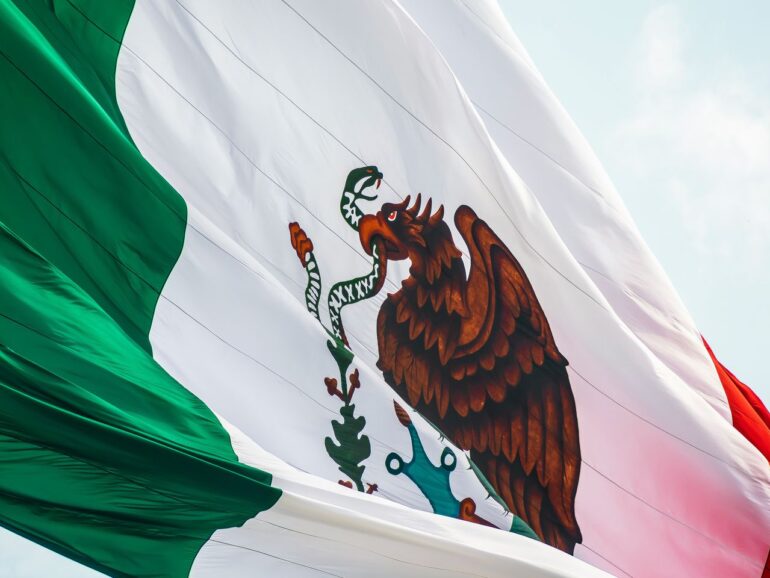Online banks in Latin America have emerged as competition to traditional banks in the past few years. They were fueled by significant venture capital investments and substantial client acquisitions, and millions have signed up across the region.
While Brazil leads the charge in digital banking innovation—several neobanks boast millions of customers already—the spotlight is shifting to Mexico as the next frontier. Here, a wave of digital lenders targets an underserved population, signalling a new era of digital banking innovation in the region.
Nubank, the Brazilian largest neobank with almost 100 million customers and a $60 billion market cap, has had its sights set on Latin America’s second-largest economy. It reported some 5.2 million customers by the end of 2023 and $1 billion in deposits, and it has established growth in Mexico as a first priority this year.
New players in town
However, the market is also heating up with the entry of other players. British fintech Revolut recently secured a license to operate in Mexico, while Santander’s Openbank is poised for a launch later this year. Local players, including Klar, Clara, Stori, Bineo and Albo are also gaining traction as more Mexicans turn to online banking.
The Mexican market presents a ripe opportunity for nimble, tech-savvy digital lenders. It offers two prized elements for fintech disruptors: a highly concentrated banking sector and vast segments of the population underserved in a nation of 130 million.
A recent report by Finnovista and Visa reveals that Mexico currently hosts 29 distinct neobanks, six of which launched last year alone. While not all may endure, the proliferation of these ventures underscores the intensifying competition in Mexico’s financial landscape and a potential leap forward in a country historically reliant on cash.
Calls for improved regulation
While fintechs have boomed in Mexico for several years, including a back-then pioneering fintech law in 2018, financial inclusion still lags in the country. According to local experts, this is mainly because fintechs often focus on attracting young customers with bank accounts rather than exclusively targeting the unbanked population.
“Neobanks have been competing for banked customers,” says Daniel Medina Siller, a deputy credit manager at Walmart’s fintech initiative in the country, Cashi. “Few of them pay attention to customers without a credit history.”
According to him, one of the main challenges for the advancement of neobanks lies in a “more competitive” regulation. Many in the sector have long been calling for updates to its fintech law, which was groundbreaking back in the day but now needs to incorporate new trends, such as Open Finance, which are gaining traction in the region.
Most neobanks end up applying for a license to become a formal financial institution or acquiring a smaller traditional bank altogether. One of the most well-known cases is that of Ualá, the Argentine neobank that acquired ABC Capital to leverage its license. In the case of Nubank, the digital lender applied for a banking license late last year to significantly expand its array of banking products.
Growing deposits
In recent quarters, neobanks aiming to gain market share in Mexico have resorted to an aggressive client acquisition tactic. They offer deposit return rates that sometimes grow into double-digits, providing a significant incentive for clients to migrate part of their capital from traditional bank accounts to these novel initiatives.
Such a strategy has borne fruit for neobanks such as Nubank, which added one million customers in the last quarter alone. In a conference call to discuss results, CEO David Velez attributed this growth to the firm’s decision to increase deposit yields in Mexico.
“We experienced a remarkable outcome following the announcement,” he said. “Within just two months, we quadrupled the level of deposits in the country to an impressive $1 billion with a segment of higher income Mexicans that are drawn to this more aggressive value proposition.”

Market still not mature
“The young digital client has become the focus of most neobanks,” says Héctor Ortega, CEO of Hypertech and financial consultant in Mexico, to Fintech Nexus. “They are all competing for the same target audience, and there isn’t yet a highly mature digital market for a particular neobank to offer a clear differentiator.”
The Mexican market, still in its early stages, contrasts with the industry in Brazil, which has the largest economy in the region. There, the digitalization of financial services has advanced by leaps and bounds, and with so many neobanks competing, some specialists are beginning to warn of signs of saturation.
In Mexico, for the time being, the path is clear. According to the country’s latest Financial Inclusion National Survey, published in 2023, the percentage of adults with at least one financial product -whether savings accounts, loans, insurance or pension accounts- remained stagnant at 67.8% in 2021, even slightly lower than the 68.4% recorded in 2015. This means almost 30 million Mexicans remain outside of the financial system, even as fintechs have consistently grown in the past few years with an alleged focus on expanding the financial inclusion frontier.


